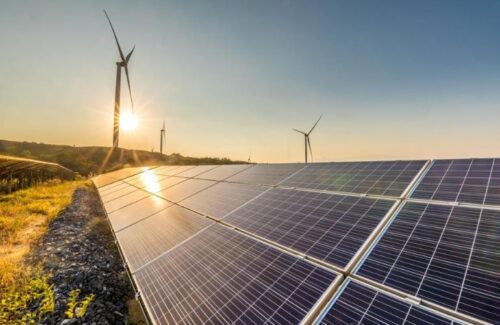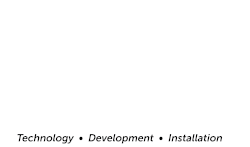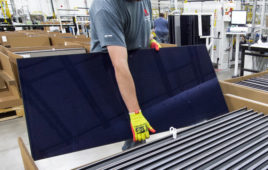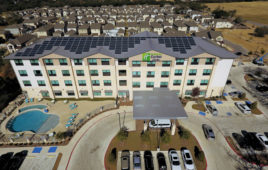 By Clara Midgley, product manager, energy storage and optimization, SparkCognition
By Clara Midgley, product manager, energy storage and optimization, SparkCognition
As the deployment of intermittent renewable resources continues to increase, energy markets are experiencing increased volatility, curtailments and savvier off-takers. Curtailment, the deliberate reduction of power to balance supply and demand in real time, is either enforced by a balancing authority’s setpoint or incentivized through negative pricing to encourage operators to stop generating. In CAISO, wind and solar projects were seeing roughly double the curtailment in early 2022 as in the previous two years.
As off-takers have negotiated themselves out of paying for curtailed production in their PPAs, owners and operators must bear curtailment risk by baking lower production numbers into PPA prices, or risk squeezed margins. This new structure protects off-takers hedging market prices with PPAs from paying PPA rates for curtailed production, but it leaves off-takers with less energy procured and fewer renewable energy credits to meet their targets.
Developers can strive to accurately predict long-term curtailment or locate a project in an area with less local congestion caused by volatility and curtailment risk relative to the rest of the market. But this is nearly impossible due to constraints from interconnection agreements and land acquisition as well as grid conditions changing during the project life.
The lack of an accurate 35-year Magic 8 Ball to help predict future conditions means parties are left looking for other ways to retain accurate production visibility while remaining competitive in an increasingly large market. Artificial Intelligence (AI) can differentiate owners and operators by improving their performance forecasts as well as price and weather forecasting for near-term and long-term.
Options for improved profitability
There are strategies owners and operators of renewable projects should consider to retain overall project profitability when faced with unavoidable curtailments.
Ensuring optimal performance enables asset owners to have increased predictability in energy production.
By taking steps to minimize energy losses and improve performance factors under your control, it is possible to wring every possible bit of productivity out of all active hours. Maximizing asset performance additionally improves the predictability of energy generation by minimizing unplanned downtime and improving forecastability.
The more accurate and more certain an asset’s production forecast, the more flexibility the operator has to schedule the asset to avoid curtailment. Curtailment of renewables often occurs in real-time due to the inability to curtail less flexible thermal resources that have set their schedules further in advance.
If grid operators have improved renewable generation forecasts, they can schedule more accurately in the day-ahead markets and not have as much variability in the real-time market that must be absorbed through methodologies such as curtailment.
AI technology is uniquely positioned to help owners and operators tackle these visibility challenges. AI-based models can improve timeliness in recognizing underperformance and improve the accuracy of estimating energy loss from availability curtailment or performance-related events. Another application is to improve maintenance planning such as optimizing solar panel cleaning schedules utilizing soiling energy loss estimates and weather forecasts.
Utilizing storage can be another method to address curtailment. Storing unneeded and otherwise curtailed available energy enables some dispatchability of the renewable asset. A challenge in hybrid asset models is often that the more pessimistic the renewable-only model looks, the more optimistic the storage addition appears. While storage should be modeled under many economic scenarios, it should also have value attributed as a de-risking service, enabled to pivot its application throughout its lifespan.
One indication of the growing reliance on storage as a hedge on solar and other renewables projects comes from a look at the most recent list of pending interconnection agreements in Texas’ ERCOT ISO, a state where solar is a small portion of the overall energy portfolio but was subject to twice as much curtailment as wind projects. As of May 2022, more than 300 of the roughly 900 projects seeking approval involved battery technology. Sizing the storage system during the development phase and enabling the appropriate interconnection is critical and complex at the development stage, but there are also many operational insights that are critical to enabling the storage asset to address the volatility and risk mitigation strategies that it was built to address.
Just like renewable generation forecasts need predictability of performance, storage asset owners need visibility into energy and power capacity relative to installed capacity and warranted capacity to make optimal decisions. Warranties, LDs and insurance policies may be financial tools to cover costs related to underperformance such as increased degradation or equipment failures, but often lost market revenue or extended downtimes due to supply chain issues run higher than what is made whole in the contracts. Asset owners and off-takers should be mutually incentivized to play an active role in holding operators and vendors to high standards in ensuring systems are performing to their highest caliber.
Curtailment is a unique problem for wind and solar asset owners because many triggers and potential remediations exist at the grid or system operator level. This is partly why you see renewable developers advocating for, investing in, and even building for specific projects to increase transmission-related solutions to enable renewable energy to flow uncongested from where there is the space and resources to the load centers. Balancing authority-type dispatch modeling improvements that could aid curtailment reductions are often centered around visibility, controllability, and forecastability of intermittent resources.
Asset level predictability and utilizing storage in hybrid configurations to increase dispatchability are tools that do exist at the asset level to ensure that renewable projects remain profitable as we strive for a 100% carbon-free electricity system.
Clara Midgley is the product manager for energy storage and optimization at SparkCognition.





I plan to set up an offshore floating PV solar farm. Using Drone to inspect the defects of the solar operation and communicate the data to the AI/ML assisted management system so that the defects can be timely fixed. The solar farm will be divided into several division and the power stored of each unit will be monitored instantly. Drones will communicated to the AI/ML systems via wireless mode.
Do you think you have the right software for us to use? The initial phase of the FPV solar farm will be about 238 MW. The final phase it could be a multiple by 10,000.